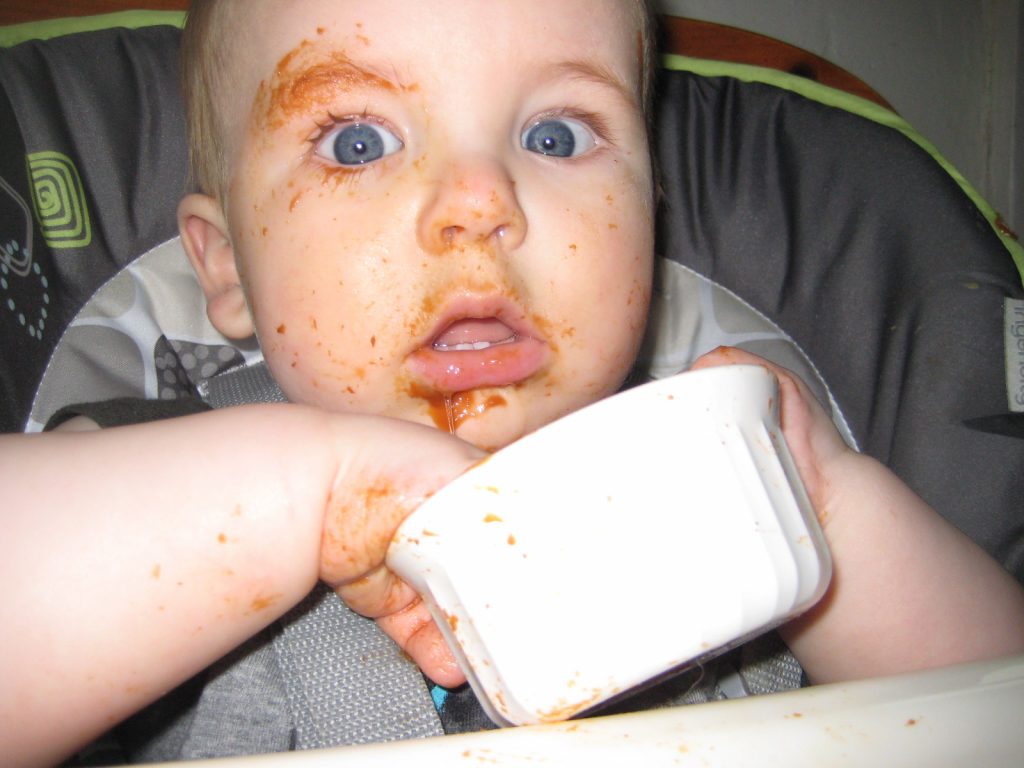Homo Erectus: The Winnie-the-Pooh of Fossil Hominins?
Did you hear about the Homo erectus who lost all but one of his teeth? He died long after the empty sockets healed, his jaw bones almost as smooth as a sea turtle’s. This intriguing specimen (a cranium and mandible with museum numbers D3444/D3900) hails from a site called Dmanisi, in the Republic of Georgia, and paleoanthropologists involved in its discovery noted that it raises some interesting questions about our ancestral species. They labeled him as having “masticatory impairment” and discussed how a hominin might survive such an ordeal. Here’s what they had to say in their 2005 paper:
… the consumption of soft tissues such as bone marrow or brain may have increased the chances of survival of individuals with masticatory impairment.
The D3444/D3900 individual apparently survived for a lengthy period without consuming foods that required heavy chewing, possibly by eating soft plant and animal foods and/or by virtue of help from other individuals, which must have exceeded that capable of being offered by non-human primates.
That seems to make a lot of sense. My teeth seem really important to my eating, my health, my survival. Granted, without them I could use my hands to mash food before gumming it, I could soften food by cooking it, and I could seek out foods that are soft. But the compassion, or caregiving, idea seems plausible too. As the paper’s authors point out, we don’t see a lot of toothless adult chimps. So a jaw bone without teeth is clearly evidence of some sort of more human-like behavior, even if the evidence is indirect.
But I’m no longer sure the punchline of this fossil’s story has much to do with “masticatory impairment,” and that’s because I live with a developing human who, for all intents and purposes, should be similarly impaired but is far from it.
My offspring has unintentionally revealed so much about human evolution that I’m constantly overwhelmed with new perspectives that might never have occurred to me. For example, when it comes to being toothless, like that poor old Homo erectus, my baby has been nailing it. Granted, he’s got seven incisors now so he’s got more grill than that Homo erectus did. He doesn’t chew with those incisors, and yet he chews. He demonstrates every day that humans, and probably Homo erectus too, can masticate without molars. Gums and salivary glands do the trick.
Sure, maybe we lose some salivary power as we age, and, sure, maybe we lose some muscle strength too, but I can no longer look at that Homo erectus skull and see “masticatory impairment,” especially if there were soft foods in the diet already, and especially if there were stone tools around, and absolutely especially if there was fire for cooking.
There is no evidence of fire at Dmanisi that I’m aware of. And, come to think of it, many of the foods my toddler consumes are cooked; however, many are not and don’t need to be. But then there’s also the fact that he still gets a large portion of his diet from my milk. That’s not something we would normally reconstruct an adult Homo erectus to be doing (although he could conceivably commandeer milk by coercing a lactating female, or a caregiver could supply it). Regardless, the notion that D3444/D3900, a fully grown adult, needed special assistance to eat, simply because he only had one tooth, just doesn’t sit right anymore. And now, thanks to that doubt, there’s room for new questions.
It occurred to me that I don’t know much about what causes adult tooth loss. So I looked into it.
Aside from trauma to the face and drug abuse, the other main cause of adult tooth loss is aging. But aging by itself is not a recipe for losing teeth. You don’t outlive your teeth so much as disease takes them from you, and the chances that disease takes them from you increase with age.
So, to me, the punchline of this toothless-Homo–erectus story is that he survived a disease, like gum disease, which may have affected other aspects of his health, and, furthermore, that he likely removed his teeth intentionally as part of that survival process. This fossil may very well be evidence of an early spark of humanity’s particular brand of endurance and cooperation. He either endured disease and the severe pain of numerous tooth extractions thanks to culture and resilience, or he endured life without teeth with the help of his friends and family. And I couldn’t have come around to seeing D3444/D3900 in this slightly different way if it wasn’t for the help of my family.
What’s more, without a baby in my life I might not have clicked on a link to a recent news article about the so-called Winnie-the-Pooh skull, and found myself pleasantly surprised to see a toothless bear skull mirroring our Georgian Homo erectus.
Why did the real-life inspiration for the children’s books lose his teeth? All of the sweets provided by visitors to the London Zoo led to gum disease. Honey in particular was to blame, as fans of Pooh Bear might suspect. This suggests that, like Pooh, perhaps our Georgian Homo erectus thought eating honey was a very good thing to do.
And if this was the case, he probably wasn’t the only honey-loving member of his species. A fragmentary partial Homo erectus skeleton (KNM-ER 1808) from Koobi Fora, Kenya, had diseased bones consistent with hypervitaminosis A—a disease caused by overconsumption of the vitamin. Eating copious amounts of bee broods and honey is one of the soundest explanations for how a hominin could come down with such a condition. A much more famous Homo erectus, the “Nariokotome” or “Turkana” boy (KNM-WT 15000), preserves an obvious and serious infection that caused an abscess in his jaw. Perhaps he too suffered from a voracious sweet tooth. We like to focus on the rise of meat-eating during Homo erectus times, but perhaps we should seriously consider their sweet-eating.
Thanks to raising a Homo sapiens, I’ve gained an entirely new perspective on what life might have been like for Homo erectus.


































